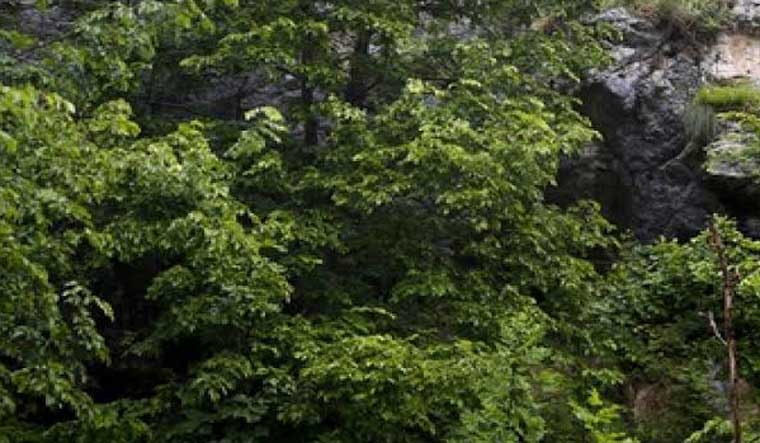On January 13, the Ministry of Environment, Forest and Climate Change released the biennial India State of Forest Report (ISFR) 2021 on January 13. From the state-wise increase or loss of forest covers, mangrove ecosystem, carbon stock, climate change hotspots, to forest fire monitoring, the ISFR-2021 examines the state of forests across the nation.
Sharing the findings, Union Environment Minister Bhupender Yadav said the total forest and tree cover of the country is 80.9 million hectares, which is 24.62 per cent of the geographical area of the country.
“We are entering the second phase of the Green Mission, the ministry has taken several decisions for increasing forest conservation and people participation. To achieve India’s aim of increasing the additional carbon sink of 2.5 to 3 billion tonnes CO2 equivalent by 2030, Nagar Van Yojna has been introduced to increase the tree cover and joined with the second phase of Green Mission in the next five years,” said Bhupender Yadav.
He emphasized the government's focus is not just to conserve the forests quantitatively, but to enrich them qualitatively. However, the report asserts the loss of natural dense forests across the nation.
What are the key findings?
ISFR 2021 has found that there is an increase of 1,540 square kilometres of forest cover and 721 sq km of tree cover compared to the 2019 report.
The states with the highest increase in the forest cover are Andhra Pradesh (647 sq km), Telangana (632 sq km), Odisha (537 sq km), Karnataka (155 sq km) and Jharkhand (110 sq km).
In the Northeast, Arunachal Pradesh, Manipur, Meghalaya, Mizoram and Nagaland have a decrease in forest cover.
With a total of 4,992 sq km of mangrove cover, the nation has had an increase of 17 sq km over the past two years.
Compared to 2019, there is an increase of 79.4 million tonnes in the carbon stock of the country. The country has a total of 7,204 million tonnes of carbon stock in the forests.
The survey has found that 35.46% of the forest cover is prone to forest fires, with 2.81% being extremely vulnerable.
The Bamboo forests have increased to 53,336 million culms (stems) from 13,882 million culms in 2019.
Where forest cover increased
The increase in the forest covers shown in the report is not uniform. The Forest Survey of India classifies India’s forests into three categories:
Very Dense Forest (with tree canopy density of over 70 per cent)
Moderately Dense Forest (tree canopy density of 40-70 per cent)
Open Forest (tree canopy density of 10-40 per cent)
Scrubs (tree canopy density less than 10 per cent) are also surveyed but do not fall under the category of forests. Though the very dense forests have an increase of 501 sqkm, it accounts for the fact that these are protected and reserved forests. The issue is with the 1,582 sqkm decline in the moderately dense forest or the “natural forests” and an increase of 2,621sq km in open forest areas. The scrub area also has an increase of 5,320 sq km. According to the experts, these numbers point to the degradation of the nation’s forests.
Area-wise, Madhya Pradesh has the largest forest cover in India, followed by Arunachal Pradesh, Chhattisgarh, Odisha and Maharashtra.
The report stated that 17 states/UTs have above 33 per cent of their geographical area under forest cover. Out of these Lakshadweep, Mizoram, Andaman & Nicobar Islands, Arunachal Pradesh and Meghalaya have over 75 per cent forest cover.
The reason for the increase in the forest cover in states like Andhra Pradesh is plantation and agroforestry.
Decline in forest cover
The Northeast reported the biggest overall loss of forest cover at 1,020 sqkm. Though the area has 23.75 per cent of total forest cover, states have lost their cover with Mizoram (1.03%), Arunachal Pradesh (0.39%), Manipur (1.48 %), Meghalaya (0.43%), and Nagaland (1.88%).
The Northeast region being repositories of biodiversity, this decline caused by natural calamities, shifting agriculture and deforestation will indeed affect the region’s water resources and will have an increased effect on landslides, as per the report.
While in the 2019 report, the forest cover in the hill regions had an increase of 544 sq km, the 2021 report shows a decrease of 902 sq km
Other findings
ISFR 2021 assessed forest cover in the tiger reserves for the first time. Of 52 tiger reserves, 20 have recorded an increase in forest cover since 2011. While the tiger reserves have decreased by 22.6 sq km (0.04 per cent), the tiger corridors have noted an increase by 37.15 sq km. The Kawal, Bhadra and the Sundarbans reserves have shown the maximum loss.
The report also estimates that by 2030, the Indian forests will be adversely affected by climate change and rise in temperature and forests in states except for Assam, Meghalaya, Tripura and Nagaland will be climate hot spots. Ladakh will also be negatively affected.
The ISFR 2021 report attributed the improvement in forest cover to “better conservation measures, protection, afforestation activities, tree plantation drives and agroforestry”.





